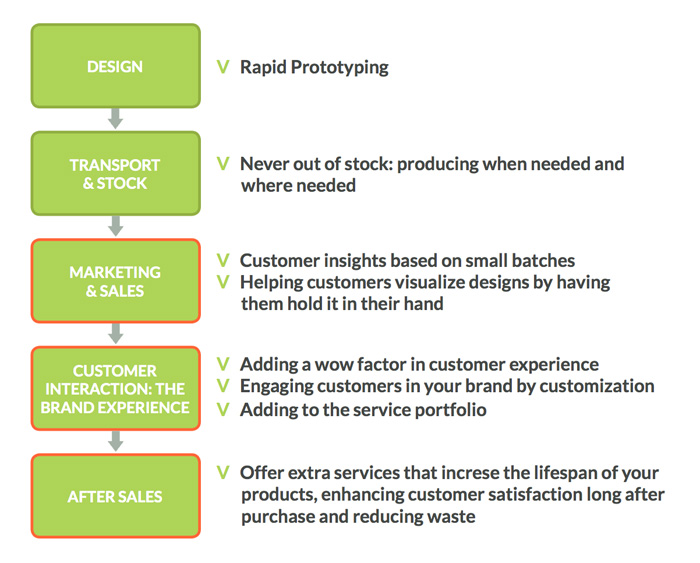Trying to convince retailers to adopt 3D printing? Dutch 3D printer manufacturer, LeapFrog, has produced a brief brochure, titled “Desktop 3D Printing: Adding Value for Retailers”, outlining a number of reasons why the technology, even at this stage, already has a place in the world of retail. The brochure is described as a “research report”, citing a belief by retailers that 3D printing is not yet ready for their shops. When you get passed the lack of well-founded statistics and citations, to realize that the report is more of a PR exercise, you realize that it does actually bring up some great points about the role that 3D printing can play in retail.
The report begins with a number of myths vs. facts regarding desktop 3D printing, such as a myth that “the current state of desktop 3D printing is not suitable for a customer interaction.” The opposing fact is that, though the technology is still in development, now is the time for retailers to obtain an edge in the marketplace by adopting 3D printing. LeapFrog goes on to describe the hype surrounding 3D printing, that the media focuses too heavily on the extreme applications of the technology such as bioprinting and gun printing and that many people believe that desktop 3D printers are just for hobbyists. With these ideas, which may require more proper source citation, the manufacturer goes on to point out the ways that 3D printing is relevant for retail.
LeapFrog argues that desktop 3D printing is under-utilized in the retail sphere, though the United States and England may be a step ahead of other countries. So far, they believe, 3D printing in retail has sprung from 3D printing companies, businesses that already have a 3D printing focus. And, while large businesses like McDonald’s and Tesco are already seeing the technology’s potential, LeapFrog lays out reasons for smaller businesses to adopt it as well.
It is at this point in the report that LeapFrog really starts to make its case. It may be more apparent to our readers that the technology is useful for prototyping goods before going into final production — both for planning purposes and to show customers what the final design might look like. The report’s authors, however, introduce a novel application: the use of 3D printing for producing small batches of items to receive customer feedback in a shorter amount of time. This application is already taken advantage of by the New York-based design firm, bhold, where products are 3D printed in small batches and then tested by customers who can then immediately report issues with the product. The firm can then modify and re-print their designs with instant upgrades. This method will become increasingly relevant as consumers have more of a say in what they purchase through the malleable, input-oriented and customizable world of Web 2.0.
Among other things, The report goes on to point out both how 3D printing can draw customers through its wow factor alone and that incorporating a 3D printer into your business will give customers the chance to have more customizability over the products that they buy. Finally, LeapFrog explains that 3D printing can enhance post-sale customer service by giving retailers the ability to 3D print spare parts for products. This, the manufacturer argues, will bring back repeat customers. The report ends by explaining what improvements will be made to desktop 3D printing in the near future, including: faster print times, more materials and more types of 3D printing processes.
The reasons given by LeapFrog, for retailers to adopt 3D printing, are pretty great ones. If I were a retailer, I would definitely find some way to 3D print something for someone for some reason, but then again, I’m already pretty excited about the technology. More importantly, if I were a 3D printer manufacturer, I would think about producing PR materials much like this. I’m not suggesting that they steal this brochure, change the colour scheme, and put their own logo on it though. Instead, they could very well produce their own brochures tackling specific markets to give out at conferences, expos and to distribute online. The benefits of 3D printing in the world as a whole are starting to reach the collective, but such readable, brief brochures that are geared to very specific markets will help potential customers understand how 3D printing might apply specifically to their business.
Source: LeapFrog



